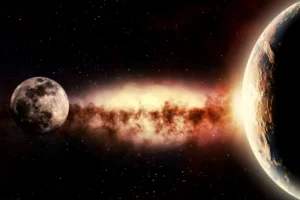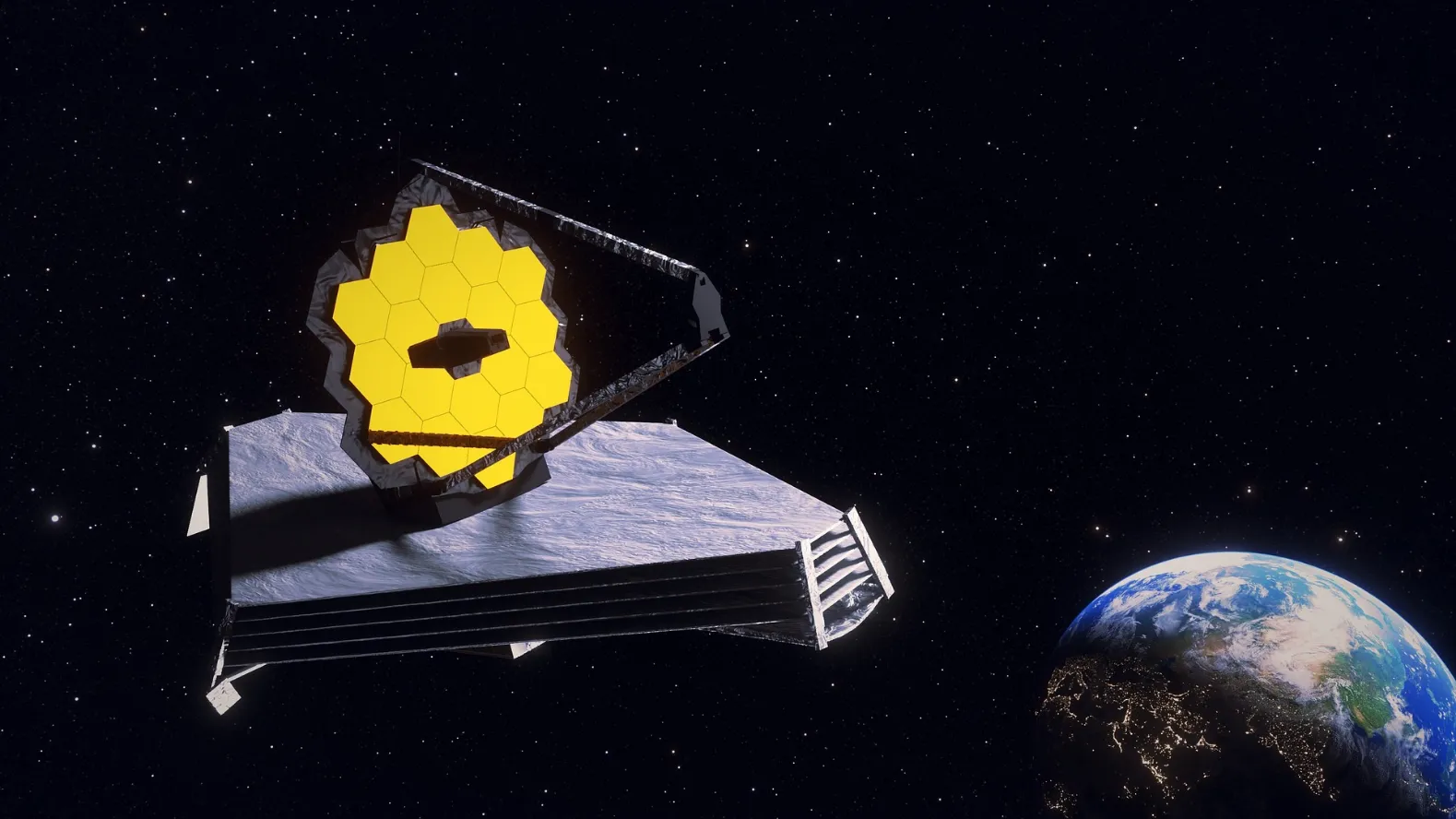
The James Webb Space Telescope (JWST) is a space telescope designed to study the universe in infrared light. It is the largest and most powerful space telescope ever built, and it is named after James E. Webb, the second administrator of NASA.
JWST is designed to study the universe from its earliest moments to the present day. It will be able to see through dust and gas, which blocks visible light, and it will be able to study objects that are too faint or too distant to be seen by other telescopes.
JWST is expected to make many important discoveries about the universe, including the first galaxies that formed, the evolution of stars and planets, and the search for life beyond Earth.
Table of Contents
Making History with the James Webb Space Telescope (JWST)
The James Webb Space Telescope (JWST) began as a concept in 1996, aiming to succeed the Hubble Space Telescope. After numerous delays and challenges, it was finally launched on December 25, 2021, marking a significant milestone in space exploration.
What is JWST?
JWST is named after James E. Webb, the second administrator of NASA. It is a joint project of NASA, the European Space Agency (ESA), and the Canadian Space Agency (CSA). The telescope was launched on December 25, 2021, and it reached its final destination in January 2022.
The Most Powerful Space Telescope
JWST is hailed as the most powerful space telescope ever constructed, promising groundbreaking discoveries in the field of astronomy. Its exceptional capabilities include the ability to see deeper into the universe, observe the formation of stars and galaxies, and study the atmospheres of distant exoplanets.
Named After James E. Webb
The telescope is named in honor of James E. Webb, NASA’s second administrator, known for his pivotal role in the Apollo program. James E. Webb’s legacy includes overseeing the moon landing missions, making the telescope’s name a fitting tribute to his contributions to space exploration. But, the telescope was not named JWST at the very beginning. It was named NGST first.
From NGST to JWST
Initially, the telescope was named as the Next Generation Space Telescope (NGST). Then the project underwent a name change to honor James E. Webb. The renaming of the telescope reflects the profound respect and recognition of Webb’s contributions to space science.
NGST Proposal (1989)
The concept for what would become JWST was first proposed in 1989, highlighting the long journey from idea to reality. In 1996, the concept of the James Webb Space Telescope (JWST) emerged, with the goal of surpassing the Hubble Space Telescope. Over the years, scientists and engineers refined the telescope’s design and capabilities, working tirelessly to turn a visionary idea into a remarkable scientific instrument.
Construction Commencement (2004)
Actual construction of JWST commenced in 2004, marking the start of a complex engineering feat. Building a telescope for space involves overcoming numerous technical challenges, from crafting intricate optics to ensuring the instrument can withstand the rigors of space travel.
Launch on December 25, 2021
After years of development and testing, JWST was successfully launched into space on December 25, 2021, a historic moment in space exploration. The launch marked the culmination of decades of scientific ambition, engineering prowess, and international collaboration.
Reached Its Final Destination in January 2022
In January 2022, JWST reached its intended position in space, marking a critical milestone in its mission. The telescope’s journey to its designated orbit, known as the second Lagrange point or L2, was a meticulously planned endeavor, ensuring it could carry out its scientific objectives effectively.
Specifications of the James Webb Space Telescope (JWST)
The James Webb Space Telescope (JWST) boasts impressive specifications, featuring a massive primary mirror, advanced instruments for infrared observations, and a precise sunshield to protect its delicate equipment from solar radiation, allowing it to delve deep into the cosmos and unravel the universe’s mysteries.
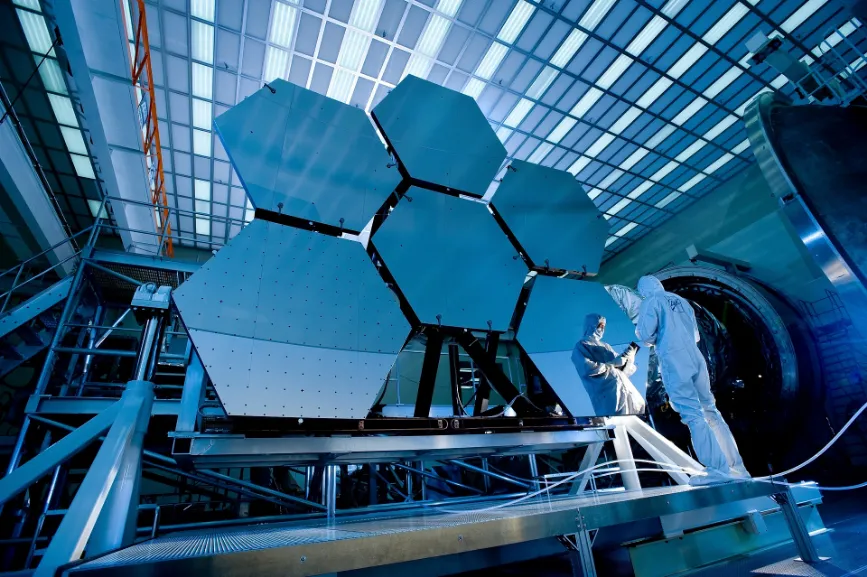
Mirror
The main mirror of JWST is made up of 18 hexagonal segments. It is 6.5 meters (21.3 feet) in diameter, making it the largest and most complex mirror ever built for a space telescope.
Instruments: JWST has four main instruments:
NIRCam (Near-infrared Camera): This instrument will image the universe in near-infrared light. It will be used to study the first galaxies that formed, the evolution of stars and planets, and the search for life beyond Earth.
NIRSpec (Near-infrared Spectrograph): This instrument will disperse light into its component wavelengths, allowing scientists to study the chemical composition of objects in the universe.
MIRI (Mid-infrared Instrument): This instrument will image the universe in mid-infrared light. It will be used to study the atmospheres of exoplanets and the formation of stars and planets.
FGS/NIRISS (Fine Guidance Sensor/Near-infrared Imager and Slitless Spectrograph): This instrument will be used to guide the telescope and to take images of the universe in near-infrared light.
Sunshield
JWST is located in a special orbit around the sun that keeps it cold. The sunshield is a large, five-layer structure that protects the telescope from the heat of the sun.
Operating temperature
JWST must be kept very cold in order to function properly. The sunshield keeps the telescope at a temperature of about -223 degrees Celsius (-369 degrees Fahrenheit).
Journey of JWST

Launch date: As we already discussed the James Webb Space Telescope marked a historic moment in space exploration when it was launched into the cosmos on December 25, 2021.
Launch vehicle: JWST was launched on an Ariane 5 rocket from the European Spaceport in Kourou, French Guiana.
Orbit: Also, we read above that the JWST is located in a special orbit around the sun called the L2 Lagrange point. This orbit is about 1.5 million kilometers (930,000 miles) from Earth.
Some of the key features of JWST
It is the largest and most powerful space telescope ever built. The main mirror of JWST is made up of 18 hexagonal segments and is 6.5 meters (21.3 feet) in diameter. This allows the telescope to collect more light and see fainter objects than any other telescope.
It is designed to detect infrared light. Infrared light is invisible to the human eye, but it can penetrate dust and gas, which allows JWST to see objects that are hidden from other telescopes.
It is located in a special orbit around the sun that keeps it cold. The sunshield of JWST is a large, five-layer structure that protects the telescope from the heat of the sun. This is necessary for the telescope to function properly.
It is expected to make many important discoveries about the universe. JWST is expected to study the first galaxies that formed, the evolution of stars and planets, and the search for life beyond Earth.
Why was JWST built?

- To study the first galaxies that formed in the early universe. JWST is designed to see the first galaxies that formed, which were only a few hundred million years old. These galaxies are so faint that they cannot be seen by other telescopes. JWST will be able to study these galaxies and learn more about how the universe formed and evolved.
- To see stars forming planetary systems. JWST is also designed to see stars forming planetary systems. This is important because it could help us to understand how our own solar system formed. JWST will be able to study the atmospheres of exoplanets, which are planets that orbit stars other than the Sun. This could help us to find planets that are similar to Earth and could potentially support life.
- To search for life beyond Earth. One of the main goals of JWST is to search for life beyond Earth. JWST will be able to study the atmospheres of exoplanets for signs of water vapor, methane, and other organic molecules. These molecules are essential for life as we know it. JWST could also help us to find planets that are in the habitable zone, which is the region around a star where liquid water could exist on the surface of a planet.
Cost of Making James Webb Space Telescope
The cost of making the James Webb Space Telescope (JWST) is estimated to be $10 billion. This includes the cost of design, development, construction, testing, and launch. The JWST is the most expensive space telescope ever built, but it is also the most powerful and sophisticated. It is expected to provide new insights into the universe, including its origins, evolution, and the potential for life beyond Earth.
The JWST was funded by NASA, the European Space Agency (ESA), and the Canadian Space Agency (CSA). NASA contributed the most funding, at $8.8 billion. ESA contributed €700 million, and CSA contributed CA$200 million.
Hubble vs. James Webb
Hubble Space Telescope
Launched in 1990
Primary mirror diameter: 2.4 meters
Wavelength range: Ultraviolet to visible light
Resolution: 0.1 seconds of arc
James Webb Space Telescope
Launched in 2021
Primary mirror diameter: 6.5 meters
Wavelength range: Infrared light
Resolution: 0.06 seconds of arc
How James Webb Space Telescope is the successor of the Hubble Space Telescope
The James Webb Space Telescope (JWST) is the successor to the Hubble Space Telescope in the sense that it is the next-generation space telescope that is designed to answer even more fundamental questions about the universe. The JWST is more powerful and sophisticated than the Hubble Space Telescope in several ways:
The JWST is more advanced than the Hubble Space Telescope in several ways
It has a larger primary mirror, which allows it to collect more light and see fainter objects.
It is optimized to observe infrared light, which allows it to see objects that are hidden from view by dust and gas.
It has a higher resolution, which allows it to see objects in more detail.
It has a wider field of view, which allows it to see more of the sky at once.
It is equipped with more advanced instruments, which allow it to conduct a wider range of scientific observations.
What is it expected to achieve?
- Study the atmospheres of exoplanets. JWST will be able to study the atmospheres of exoplanets in unprecedented detail. This will allow scientists to learn more about the composition of these atmospheres and the potential for life on these planets.
- Study the evolution of galaxies. JWST will be able to study how galaxies have evolved over time. This will help us to understand how the universe has changed and how it will continue to change in the future.
- Explore the Universe’s Dark Ages. JWST’s powerful instruments will probe the universe’s “Dark Ages,” a period shortly after the Big Bang when the cosmos was shrouded in darkness. It will help scientists learn how the first galaxies and stars emerged, marking a crucial phase in cosmic history. Uncovering these cosmic mysteries will shed light on the universe’s earliest moments.
The first images from the James Webb Space Telescope
The first images from the James Webb Space Telescope (JWST) were released on July 11, 2022. These images are the deepest and sharpest infrared images of the universe ever taken. They reveal the earliest galaxies that formed in the universe, as well as new planets.
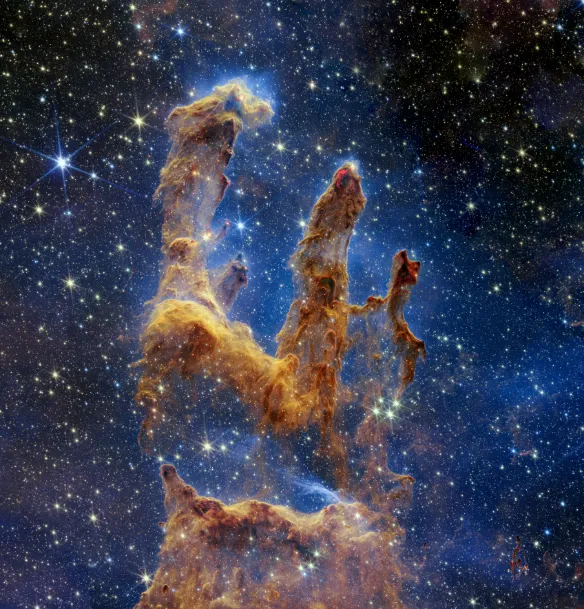
What are the first images of JWST?
- A deep field image of the Carina Nebula, a star-forming region located about 7,600 light-years from Earth. This image reveals previously unseen details of the nebula, including baby stars and pillars of gas and dust.
- A close-up image of the Southern Ring Nebula, a dying star located about 2,000 light-years from Earth. This image reveals the intricate structure of the nebula, including a doughnut-shaped ring of gas and dust.
- A spectrum of WASP-96 b, a hot Jupiter exoplanet located about 1,150 light-years from Earth. This spectrum reveals the presence of water vapor in the planet’s atmosphere, the first time water has been detected in the atmosphere of an exoplanet.
- A mosaic of Stephan’s Quintet, a group of five galaxies located about 290 million light-years from Earth. This image reveals the interaction between the galaxies, which is causing them to distort and merge.
How will these images change our understanding of the universe?
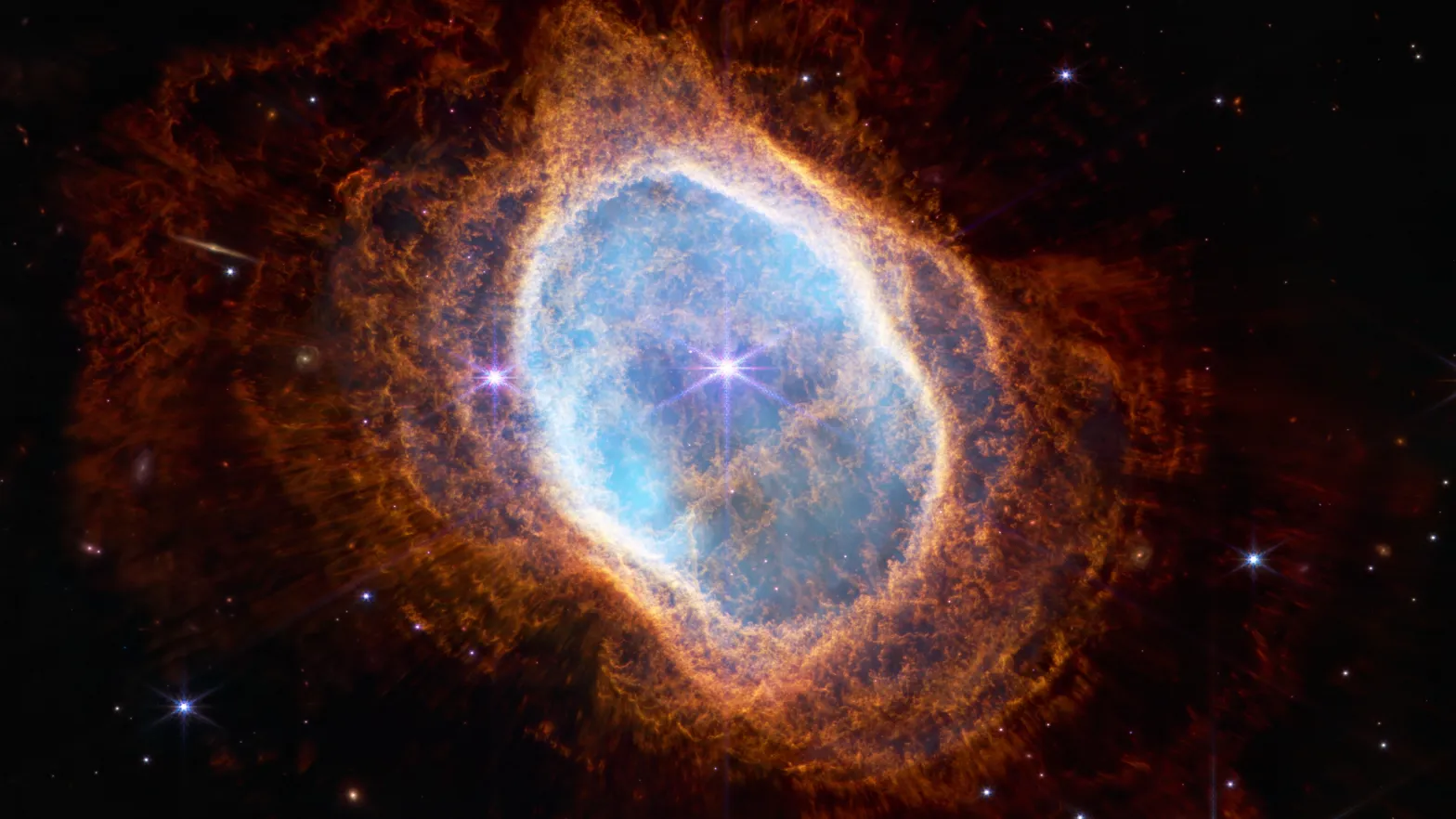
The first images from JWST are a major breakthrough in astronomy. They have already changed our understanding of the universe in a number of ways, and they are expected to lead to even more discoveries in the years to come. For example, the deep field image of the Carina Nebula has revealed previously unseen details of the nebula, including baby stars and pillars of gas and dust. This information could help astronomers to better understand how stars form and evolve.
The close-up image of the Southern Ring Nebula has revealed the intricate structure of the nebula, including a doughnut-shaped ring of gas and dust. This information could help astronomers to better understand how dying stars evolve.
The spectrum of WASP-96 b has revealed the presence of water vapor in the planet’s atmosphere. This is the first time water has been detected in the atmosphere of an exoplanet, and it is a major step forward in the search for life beyond Earth.
The mosaic of Stephan’s Quintet has revealed the interaction between the galaxies, which is causing them to distort and merge. This information could help astronomers to better understand how galaxies evolve.
The first images from JWST are just the beginning. In the years to come, the telescope is expected to make even more groundbreaking discoveries that will change our understanding of the universe.
How long is JWST expected to operate?
JWST is expected to operate for at least 10 years. However, it could operate for much longer, depending on its condition. The telescope is designed to be very cold, and the sunshield is designed to protect it from the heat of the sun. If these systems continue to function properly, JWST could operate for many decades.

The James Webb Space Telescope’s Promising Future
In summary, the James Webb Space Telescope (JWST) represents a quantum leap in our cosmic understanding. This telescope has opened up a universe of possibilities. With its powerful instruments and unique vantage point, JWST can delve into the earliest galaxies, examine exoplanet atmospheres, and decode cosmic mysteries. Its captivating images are just a glimpse of what’s to come. Over the next decade and beyond, JWST promises to redefine our understanding of the cosmos and unveil the universe’s hidden truths, rewriting the rules of astronomy.







